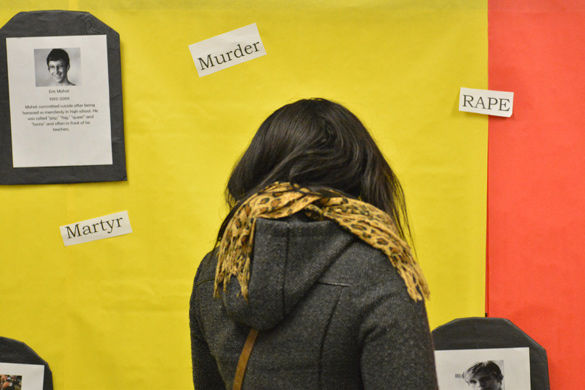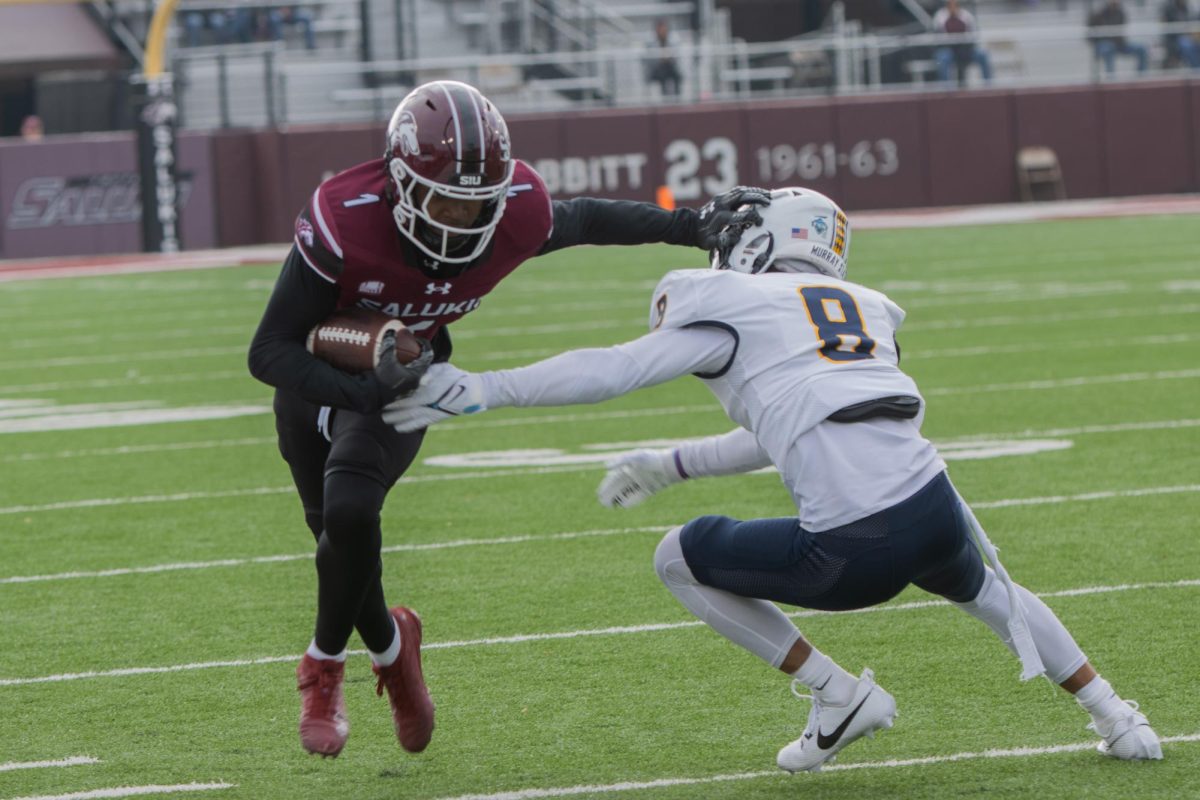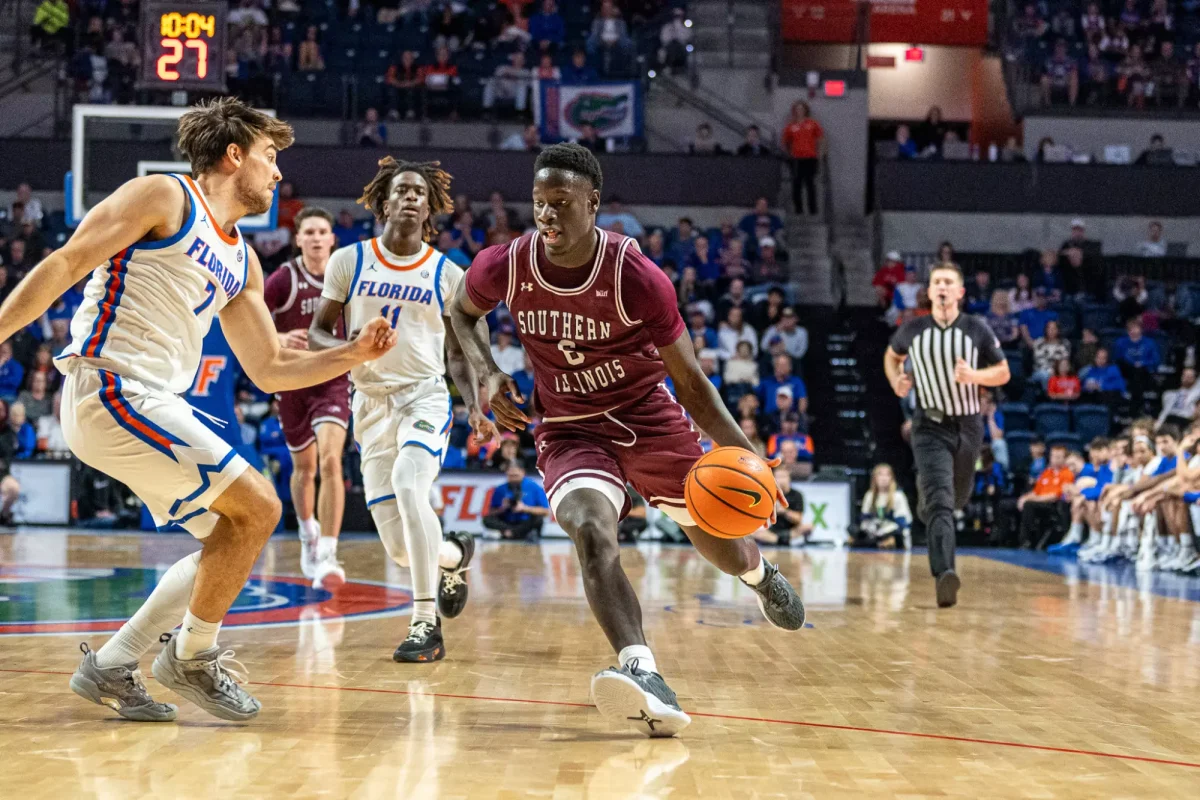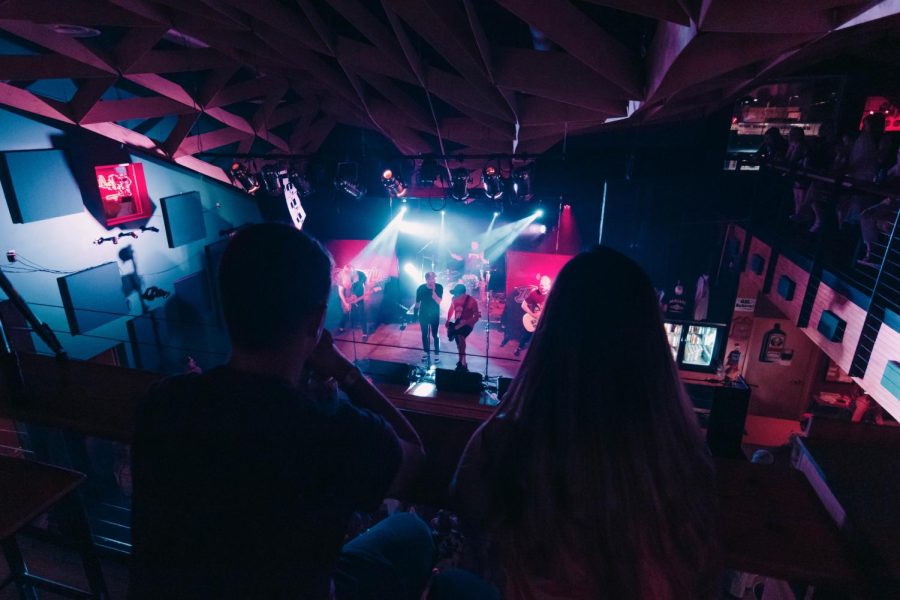Tunnel sheds light on oppressive situations

A student walks through the graveyard site Monday in Grinnell Hall during the first night of the Tunnel of Oppression. The walking tour is organized by University Housing and the Black Togetherness Organization each year and takes participants through several rooms with themes of prejudice and injustice. The public tours continue through Thursday.ROBERT OLSON • DAILY EGYPTIAN
February 24, 2014
Students walking through the lower level of Grinnell this week may be called racial slurs, cat-called or face discrimination by various members of the student body.
The annual Tunnel of Oppression is the finale for the campus-wide celebration of Black History Month. Multiple RSOs gather together to put on a series of simulations featuring a variety of oppressive scenarios marginalized groups face daily.
The tunnel runs from 5 to 9 p.m. until Feb. 28, and is open to the public. The event is free with the last tour beginning at 8:30 p.m. each day. Each tour ends with a debriefing session from the staff of the Center for Inclusive Excellence, the SIU Counseling Center and the Women’s Center in Carbondale.
Advertisement
Alfred Jackson, coordinator of retention and outreach with university housing, said the tunnel is known for making many groups experience a mix of overwhelming emotions.
“It’s not meant to make you feel comfortable within yourself,” he said. “The tunnel is meant to make you step outside the box and envision the oppression of others.”
One RSO, The Black Males Roundtable, is giving the public a look inside police brutality. KeShon Adkins, the chief knowledge officer of the BMR, said while the event requires no fundraising to participate, it requires immense time and effort.
“Some of our members dedicated their time to volunteer as tour guides for the tunnel, and others put time into making our room impactful,” he said.
Adkins, a senior from Chicago studying Radio and Television, said BMR chose to address police brutality because it is an issue the general public does not typically pay attention to.
“As an organization, we feel that police brutality is a crime that has been going on for many years but is often overlooked,” he said. “Our primary goal is to open the eyes of the individual who enter the tunnel to let them know that this is real and should be stopped immediately.”
Adkins said practicing for the tunnel was intense as he and other group members have to portray either the role of a brutal officer or a defenseless victim.
Advertisement*
“Throughout the mock beatings and cursing, I realized that what we are doing presents a sad visual of what actually happens to innocent people,” he said. “Re-enacting the experiences of people such as Oscar Grant and Sean Bell makes me angry that this type of situation actually goes on.”
Oscar Grant was a 22-year-old killed by Bay Area Rapid Transit officer Johannes Mehserle in 2009. Sean Bell was shot four times and died the night before his wedding day in New York City after he and two friends were fired on more than 50 times by NYPD officers.
“The impact, we as an organization, would like to have is to simply spread the message of how wrong police brutality is,” Adkins said. “It is a reality that many African-American males face, whether you’re living in an urban city or on a college campus.”
According to a study done by the Malcolm X Grassroots Movement, police killed 313 African-American males between 2011-2013, or one every 28 hours, 40 percent of whom were between the ages of 22 and 31 years old. More than 15 percent of these males were between the ages of 18 and 21. More than 40 percent of these killings happen after a form of racial profiling.
Adkins said he went through a form of racial profiling and police brutality when he was 18. Chicago police officers pointed a gun at his head after they said he fit the description of a suspect they were looking for.
“Once they found out I was innocent, they hopped in their cars and pulled off,” he said.
Adkins said he wants the BMR’s room to be memorable and effective.
“When people leave our respective room, we want them to not only be in shock, but also critically think about what they have seen and what can be done to change it,” he said. “As I said, our scene isn’t meant to scare people, but more so give them a wake up call. It is not a policeman’s job to physically harass an individual unless they are physically under attack themselves.”
Advertisement








